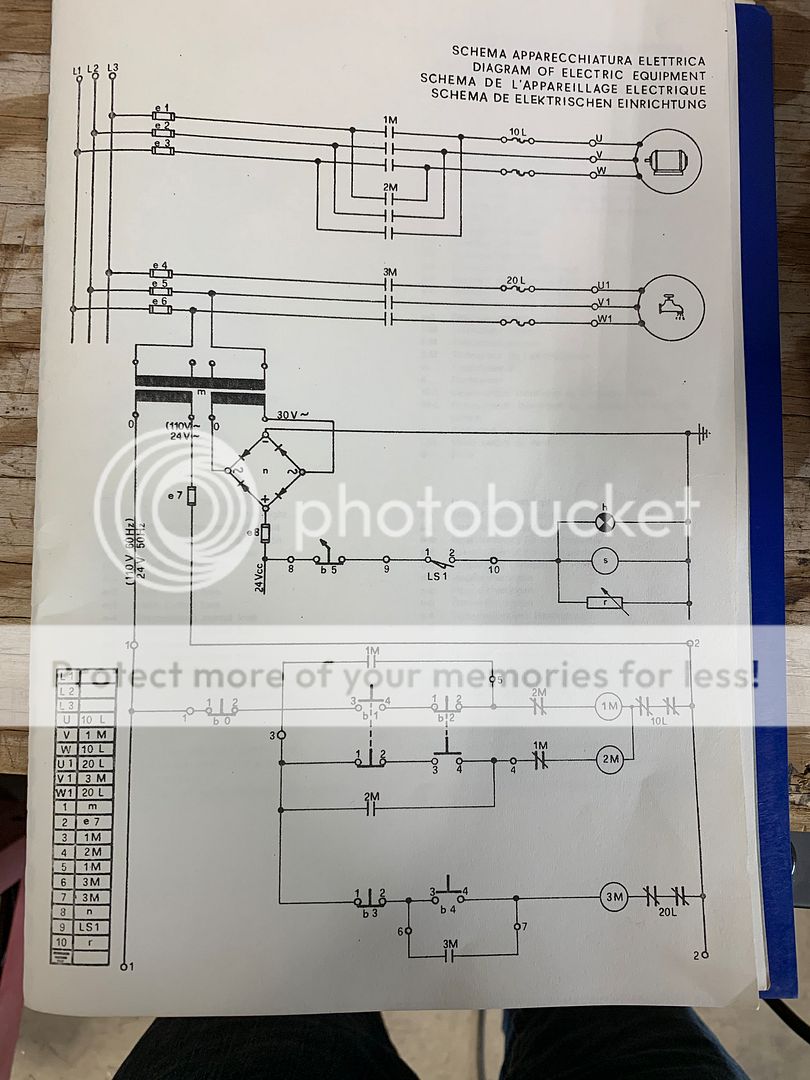Awleaphart
Aluminum
- Joined
- Mar 16, 2019
Hello,
Start off I have wired up my first VFD to a Bridgeport mill and everything went great.I am using the existing drum switch sending the 5 volts to the rev and forward places on the VFD. I"m not running 240 volts to the drum switch.( Ask Power VFD)
Now I'm about to finish wiring up my second VFD (Huanyang Model GT-7R5G-2) on a used Lathe I bought that already has a control panel. (Lansing P15)
I'm wanting to use the lathe controls that are already there and don't know where to wire up or how to make the VFD sent power to the Lathe motor by using the Lathes Start and stop controls. My lathe has a motor start Forward,Motor start REV. and one stop. 3 push buttons. I have attached a picture of the inside of the control panel.
Any direction would be helpful.
Thanks
A Leaphart

Start off I have wired up my first VFD to a Bridgeport mill and everything went great.I am using the existing drum switch sending the 5 volts to the rev and forward places on the VFD. I"m not running 240 volts to the drum switch.( Ask Power VFD)
Now I'm about to finish wiring up my second VFD (Huanyang Model GT-7R5G-2) on a used Lathe I bought that already has a control panel. (Lansing P15)
I'm wanting to use the lathe controls that are already there and don't know where to wire up or how to make the VFD sent power to the Lathe motor by using the Lathes Start and stop controls. My lathe has a motor start Forward,Motor start REV. and one stop. 3 push buttons. I have attached a picture of the inside of the control panel.
Any direction would be helpful.
Thanks
A Leaphart









